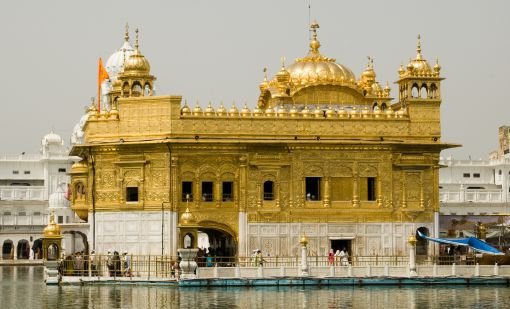
wikimedia.org
1. The Foundation Of The Golden Temple Was Laid Down By A Muslim Saint
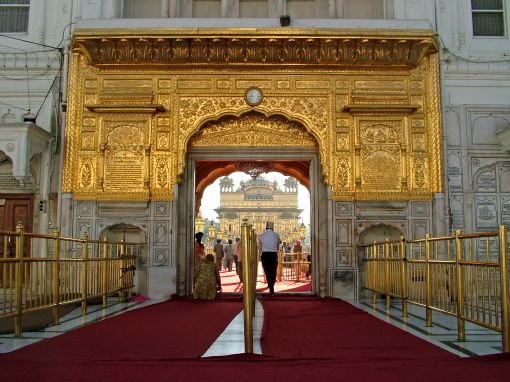
source: wikimedia.org
Guru Arjan Dev, the fifth Sikh Guru in 1588 planned to build a temple in the centre in Amritsar which would be open to people of all castes, and climes; thus he invited his friend and great contemporary mystic and Muslim savant, Mir Mohammed Muayyinul Islam, popularly known as Mian Mir, to lay the foundation stone of the temple. The tension between Hindus and Muslims in the 16th century was evident and the Sikh prophets desired to level down these barriers with a view to discover and provide a common spiritual ground for the two, Hinduism and Islam, thus was born the idea of Golden temple.
HolidayIQ Traveller Mukul Arora from Chennai shares, “There is no words to describe the Golden Temple. One of the best holiest place I have ever seen, what a internal peace I got when I entered Golden Temple. One should feel blessed after visiting this place and I met lot of people and families who came frequently to Golden Temple from across country. Outside the temple there is a good market one should definitely visit this place.”
2. The Temple Is Made Of Marble But Plated With Real Gold
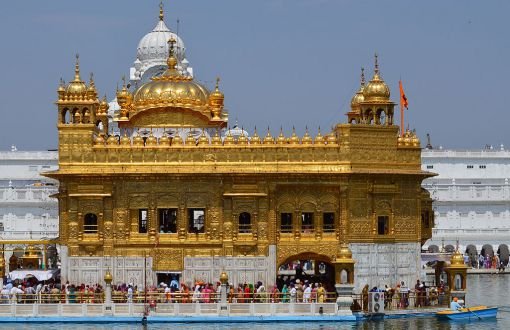
source: wikimedia.org
The gurudwara is constructed with white marble overlaid with genuine gold leaf. In the early 19th century, 100kg of gold were applied to the inverted lotus-shaped dome and decorative marble was added to the structure.
HolidayIQ Traveller Sukhvinder Kaur from New Delhi shares, “This is the most important temple for Sikhs but is visited by one and all, from far and wide. Anybody going to Amritsar cannot avoid visiting this most serene temple. Since cleanliness is maintained by volunteers, it remains neat and tidy. Free food & water is available round the clock. The katha and kirtan at the temple is melodious. There is a big sarovar, surrounding the temple, which keeps the area cool. The temple has gold work done on major part of it including the dome. The carving work done on the walls is amazing. It is said that by taking a bath in the sarovar, one gets cured of the diseases. Its all a matter of faith. For peace of mind, this is the place.”
3. The Pool Surrounding The Golden Temple Is Known As Amrit Sarovar
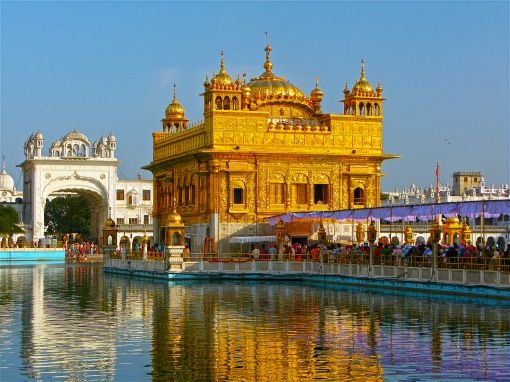
source: wikimedia.org
The water surrounding the temple is a sacred pool known as the Amrit Sarovar (Pool of Nectar). The devotees who visit these shrines will bathe in these pools as Sikhs believe that spiritual and worldly benefits are gained by immersing in the holy waters of these sarovars. Legend has it that a dip in the holy water of the Sarovar surrounding the temple can cure people of many ailments. It is said that once a leper took a dip in the holy water and got cured of his leprosy.
HolidayIQ Traveller Dainell Wood shares, “Absolutely majestic, will come here again & again. The place is so spiritual, so pure, so holy and so clean. When I was inside its premises, the rest of the world seemed unimportant to me, my world was confined to this sacred place. I did not want to get out of it. The pool that's just wonderful, the moment I stepped into it, I felt like all my sins were washed off. I was as clean as I was born. Really, a must visit for everyone.”
4. Around One Lakh People Are Fed For Free Everyday At The Golden Temple Langar
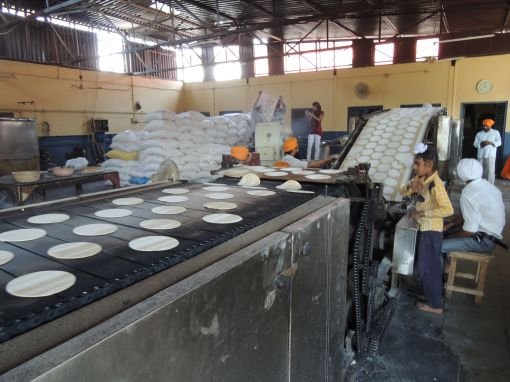
source: flickr - BOMBMAN
The largest langar of all gurudwaras is organised everyday at the Golden Temple, where around 100,000 people a day are fed for free by temple volunteers, but the number double during special occasions. Around 12,000 kg of floor, 1,500 kg of rice, 13,000 kg of lentils and upto 2,000 kg of vegetables are consumed everyday. The langar caters to people of all castes and creeds.
HolidayIQ Traveller Ari Daman Paul Garg from Ghaziabad shares, “Visited twice, first in the evening then in the morning; in the evening had Langar with hundreds of devotees/visitors. Very good, fresh and hot food, excellent Kheer, unique way of serving drinking water. Exemplary team work in preparing and serving the food, then cleaning and keeping the utensils. Before Darshan of the Shri Guru Granth Sahib one has stand in a queue for about an hour. Everything was systematic and neat and clean.”
5. At The Langar, All Diners Have To Sit On The Floor
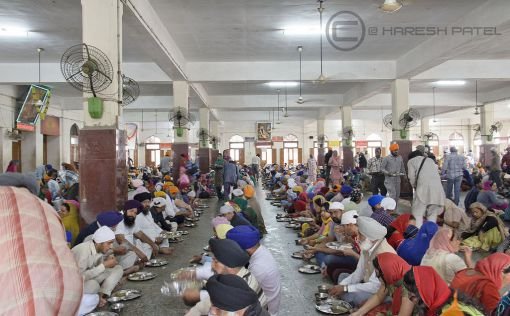
source: flickr - Haresh Patel
All the diners have to sit on the floor, irrespective of caste, status or creed, symbolising the central Sikh doctrine of equality of all people. According to legend, around 500 years ago, Guru Nanak introduced the idea of langar where everyone regardless of religion or social status, could sit on the ground together as equals and eat the same food. The philosophy behind this free meal was a radical departure from the prevailing norms, where caste hierarchies decided what you ate and with whom you ate it.
HolidayIQ Traveller Manpreet Singh from Raikot shares, “Very attractive place to visit. Religious and historical place. Golden temple is known as hub of Sikhism. Everyone got peace of mind here and free food from langar hall. Free rooms for tourists made by SGPC Holy place looks very attractive and clean. Place is well disciplined all religion come here to visit.”
The views above are collated from opinions expressed by travellers on www.holidayiq.com
